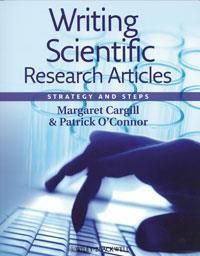This book aims to mentor early-career researchers through the difficult crucial steps of knowing how to write
Writing scientific research articles: strategy and steps
Margaret Cargill and Patrick O’Connor
Chichester, UK: Wiley-Blackwell 2009 | 184pp | ?17.99 (SB)
ISBN 9781405186193
Reviewed by David Parker

As both an author and copy editor of scientific articles, I know well the challenges and pitfalls of writing up research for publication in the international literature.
Written by a science educator and a linguist, this book aims to mentor early-career researchers through the difficult crucial steps of knowing how to write, what to write and where to aim for publication, reminding the reader that though the quality of their research is key, how it is presented for publication will ultimately decide whether it is accepted and so gain the kudos it deserves.
The book breaks down the writing process into a series of key concepts, from understanding the publishing process and the reasons for doing so, to explaining the purpose and best practice structuring of an article’s various sections, through to the important issues of language use and the avoidance of plagiarism.
Depending on how a writer intends to use the book, there are exercises (with answers) at the end of each section, the scope to learn as you write your own article, complete example articles to refer to, and the support of a dedicated website.
Some of the authors’ advice may seem like common sense to some, but nevertheless it is sometimes valuable to have the underlying reasoning reiterated to keep writers focused on their goal of successful publication. Even for a more seasoned writer, the very well laid out and accessible style of the book offers a dip-in reminder of aspects of good scientific writing practice.
As always, a research article is never better than the quality of the data and scientific rigour that underpins it, a principle that no generalised training material, such as this book, can reasonably hope to impart. That said, I found that there was enough genuinely useful guidance, which can help writers develop their technique, for this book to be a worthy companion on any new researcher’s desk.












No comments yet